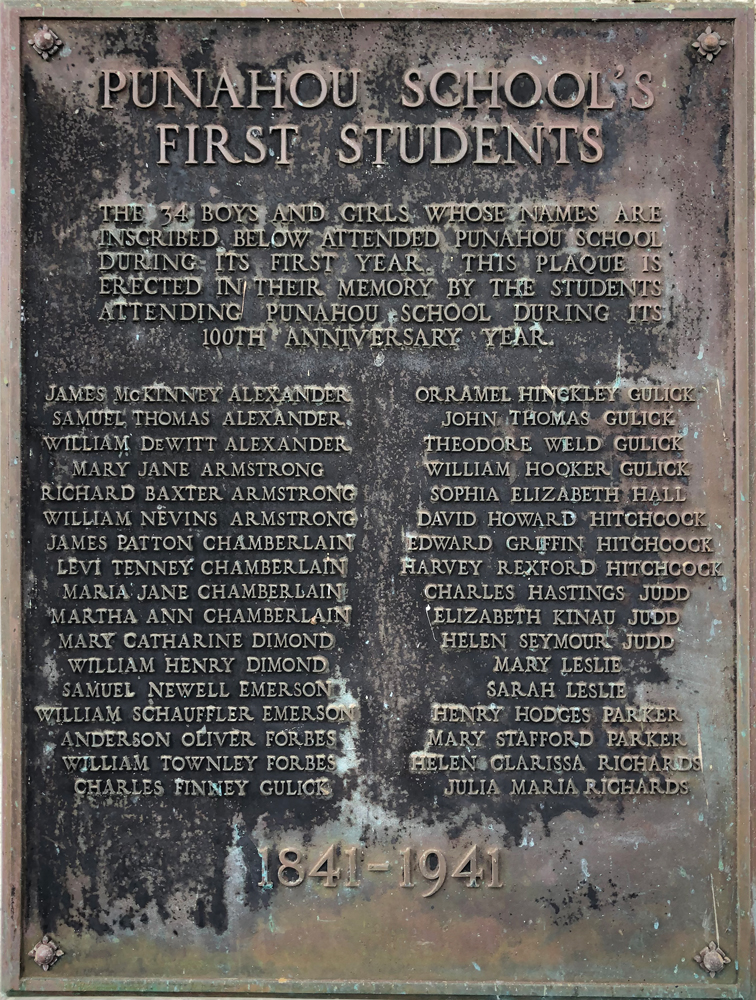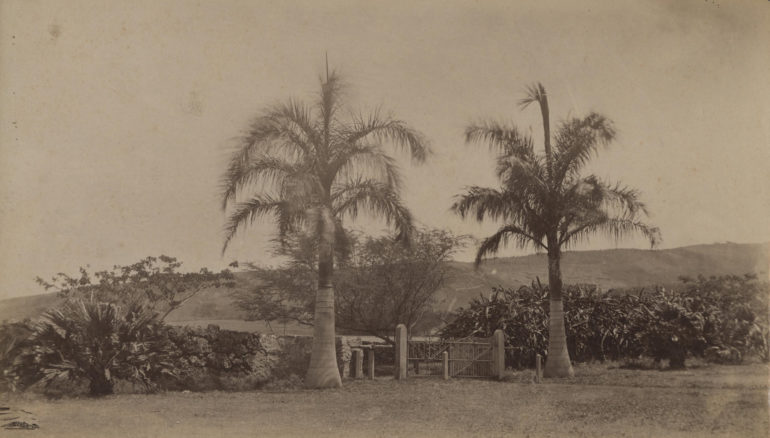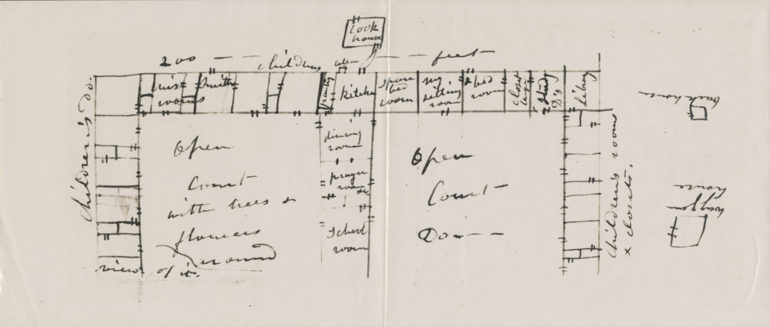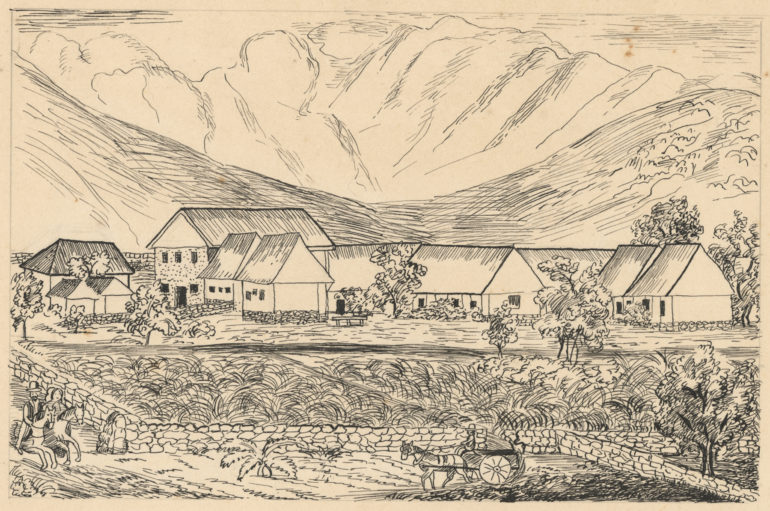On July 11, 1842, Levi Chamberlain, business agent for the Mission, bundled four of his children and two others into his horse-drawn wagon and set out from the Mission compound in Honolulu across the treeless plain to Kapunahou. “A pretty strong wind and some rain,” Chamberlain noted about transporting the children to their first day of class at Punahou School. It was a triumphant day, born from decades of heart-breaking separations.
Around Cape Horn to School
- As their families grew in number, the missionaries agonized about their children’s education. Mission duties were consuming, leaving them little time to instruct their young ones, and they had no financial resources to provide for teaching. They also worried about the “contaminating influences of [Hawaiian] society,”1 on their children.
- Many opted to send their offspring to be educated on the East Coast. Between 1826 – 1841, 20 mission children left Hawai‘i for America, sailing the long and difficult route around Cape Horn. Some never saw their parents again.
— Sybil Bingham, on the departure of her seven-year-old daughter, Sophia in 1829 2
Early Plans and Alternatives
- The Mission’s original plans for Kapunahou called for building a plantation, parsonage and a school for ali‘i children. But the project stalled in 1836 for lack of funding.
- In 1837, Miss Marcia Smith arrived with the Eighth Company of missionaries and, as a school for Hawaiians at Punahou was pending, began teaching mission children, moving from station to station.
- When the Chiefs’ Children’s School opened, it fulfilled the need to educate Hawai‘i’s future leaders. In 1840, the missionaries voted unanimously to establish a school for their own children on the grounds of Kapunahou.
— Levi Chamberlain, writing to the ABCFM in 1840 3
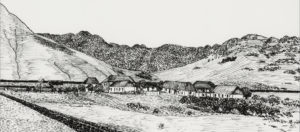
A School for Mission Children
- At its May 1841 general meeting, the Mission founded Punahou School, and appointed Daniel Dole principal. Miss Marcia Smith signed on as teaching assistant.
- Two thousand dollars was set aside to build the schoolhouse. The one-story, E-shaped building was located near today’s Cooke Library. It included a classroom measuring 31 by 16 feet, a sitting and prayer room, dining room and seven rooms for boarding students. The building was described as a “’purely native product.’ Its timbers and rafters of wood had come from Manoa Valley, the pili grass for its roof from Rocky Hill, and the plaster and whitewash from the Kewalo reefs.”4
- On July 11, 1842, Punahou School opened to 15 missionary children, ranging in age from seven to 12 years. Mr. Dole and Miss Marcia Smith stood near the green veranda posts of the building, poised to greet the children. The boys were clad in trousers and waistcoats while the girls wore short dresses with pantalets. In the classroom, green desks with attached seats had been set out in rows. “The bell rang at nine, and the children took their seats. All was quiet. With their Bibles before them they read in turn, and before the slates were taken out, Mr. Dole sought a blessing from above on the school.”5
— Daniel Dole in a letter to ABCFM, c. 1842 6
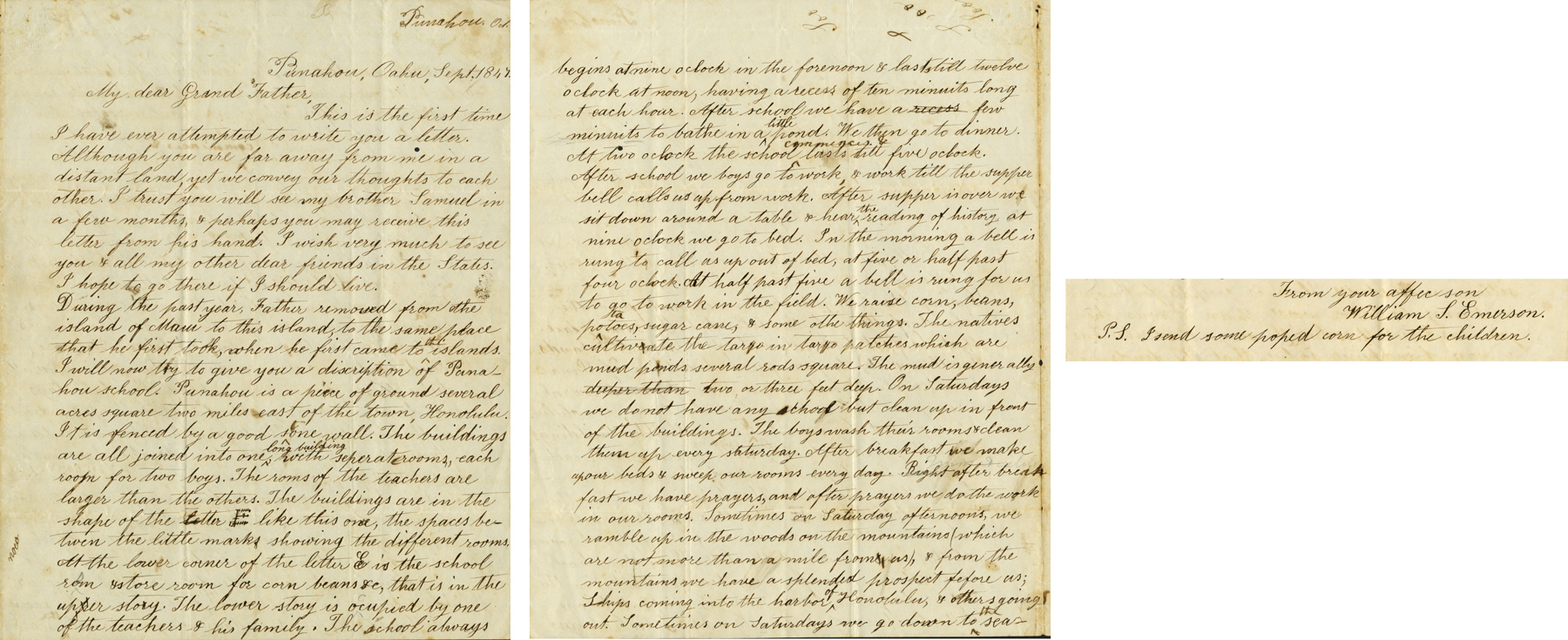
1 Alexander and Dodge, Punahou 1841 – 1941, p. 8.
2 Ibid., p. 15.
3 Ibid., p. 56.
4 Ibid., p. 66.
5 Ibid., p. 73.
6 Ibid., p. 68.


